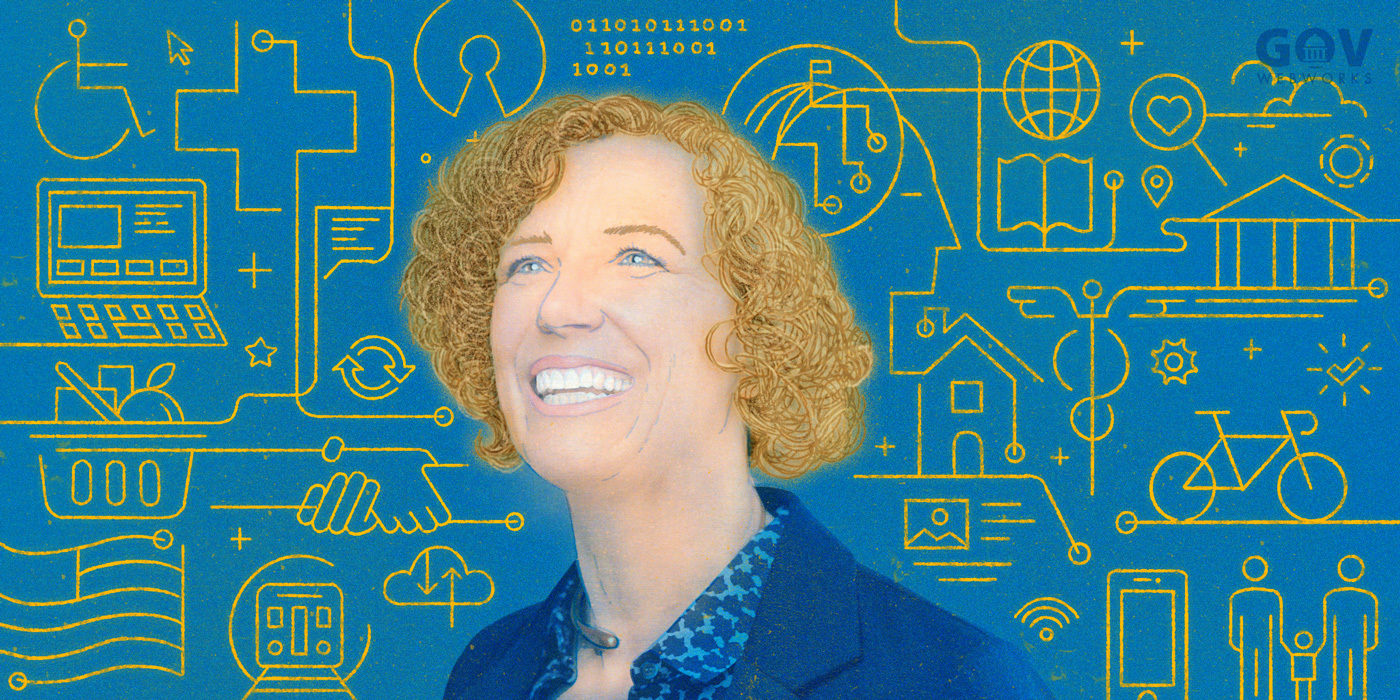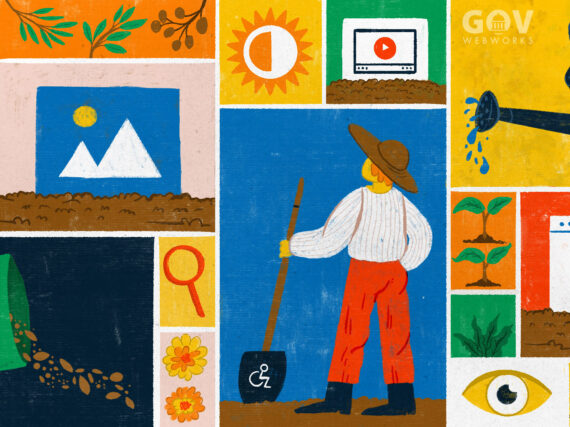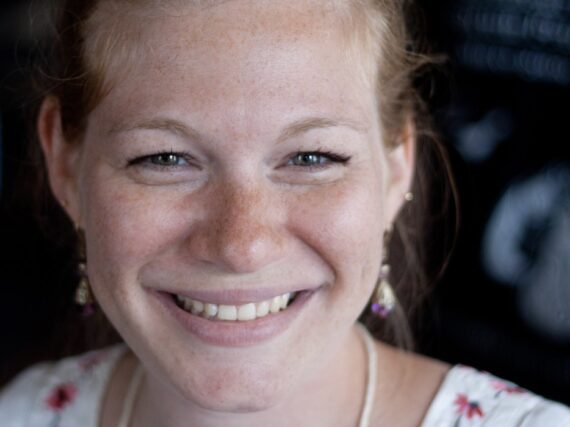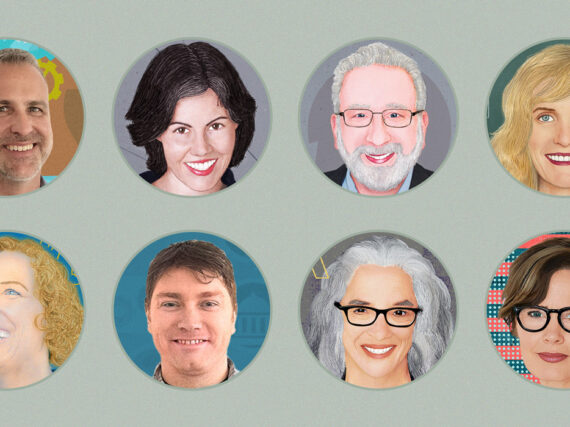About a decade ago, user experience researcher Cyd Harrell had a pivotal career moment, as noted in her 2013 TED Talk. She was driving through Golden Gate Park when her young daughter insisted she do something about the sprinklers watering the rain-soaked grass. On a whim she tweeted a note to the city. They quickly replied to thank her, and turned off the sprinklers.
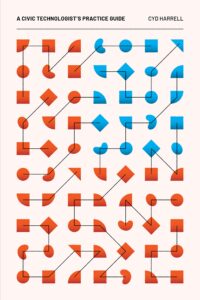
“The ability to affect my city in a small positive way through collaborating with the government was a first-time experience for me, and one that changed my future career,” she said in the TED Talk. She went on to champion UX in civic tech at the nonprofit organization, Code for America, next as chief of staff at 18F, the federal technology and design consultancy, and most recently as a usability consultant for the California Courts self help guide. This April she’s come full circle from that sprinkler tweet with the appointment to serve as San Francisco’s chief digital services officer, working with city departments to improve accessibility for online services.
Civic tech is defined as technology that “assists government in delivering citizen services and strengthening ties with the public,” says GovTech. In her book, A Civic Technologist’s Practice Guide, Cyd invites readers to join the growing civic tech movement with “the aim of making government more responsive, more efficient, more modern.”
As she prepares to step in as San Francisco’s next Chief Digital Services Officer, we spoke with Cyd about her work in the field of civic tech, and how usability and inclusivity make a big difference in the success of government digital service delivery.
Who did you write A Civic Technologist’s Practice Guide for?
Those of us in civic tech often get calls and emails from those interested in getting into the space, so I wanted something you could hand to them and say, “Oh, here you go, there’s this book.” An audio book just came out too, with Taylor Campbell’s gorgeous voice.
“My hope is that the book can help a greater diversity of people to enter the field of civic tech with the confidence and understanding to create grassroots improvements.”
Why is usability so important in civic tech?
At its core, usability is about respecting people’s time and agency. If an interface is hard to use, or imposes time burdens on people, it breaks trust and damages the relationship between that user and the organization responsible. In private life, a user might address this by turning to a competitor or choosing not to engage, but those options aren’t available with government. If it’s too hard to register to vote in my county, I don’t have the option of registering somewhere else. If I need income support during a global pandemic, only the government can provide that service. So rather than a competitive advantage, usability in the public sector becomes a moral responsibility.
“We have to recognize that what we design stands in for the government, as a whole, in gaining or losing people’s trust.”
Why has it taken longer for the public sector to catch up with the private sector in terms of digital usability?
“It was very common until about 2015 for folks at a lot of levels of government to believe user research was illegal or against regulations. Design as a largely graphical thing persisted a little later than it did in industry because we had to prove that user research was ethical and okay.”
When I joined Code for America in January of 2013, the legal and compliance folks at the city government thought usability studies were high risk. So we started doing training and Q&A for the city officials as part of their onboarding. I put out the word that anybody in government with questions about UX should write me an email, and I’d be happy to talk about it.
Things really went into high gear after the issues with healthcare.gov in 2013-14. Obama started USGS and 18F and a bunch of the people who had been part of the rescue process got involved. The work that the folks at GOV.UK did was also enormously foundational, and the efforts of the Center for Civic Design around the ballot and election process really brought design in government to the fore.
We recently spoke with Padma Gillen about the success of GOV.UK. What challenges does the US have in providing similar resources?
When it first launched in 2012, GOV.UK’s blazing performance and simplicity really stood out from the commercial web. It was focused on service design with a lot of user research and it had a powerful visual effect composed of a typeface drawn from UK road signs, very careful use of white space, and one single graphic, the Crown.
“With the US Web Design System, we see some pieces of that strategy, but the different structure of the American government, with our federated system, makes digital service delivery more complicated here.”
We have 50 state governments and about 3,000 counties and 20,000 municipalities. A lot of the time, a particular service may be administered by the states and the states may pass that to counties, so we only have a few places where the federal government can set a high standard for service. Whereas in Britain, driver’s licenses are national, so the GOV.UK team could build a central driving license service. They had the opportunity to do things once and make them good, and then iterate on them.
What issues did you face in your work to improve accessibility for the California Courts self help guide?
We went in with a fairly broad mandate to increase access to justice through digital means. In the California Courts, about 80% of non-criminal cases have at least one side that doesn’t have a lawyer. These self-represented litigants go to court trying to navigate issues on their own.
We found people were having a hard time knowing where they were in the court process and what they were supposed to do next. For instance, something that really confounded people was a very basic step, which was serving papers. We all see it on TV, “You’re served!” But there are rules about who can do it, and then you have to prove to the court that it happened. If you don’t do that correctly or in time, nothing can go forward because the court has to be sure, for fairness, that everybody has the same information.
“The first service we built was a procedural guide about how to serve papers. The old content for this process was 3,000 words. Most people don’t need all of the information, but with government the information must be provided. You have to find creative ways to make it accessible for the people who do need it, and out of the way for people who don’t.”
We spent weeks wrangling with the attorneys to cut the content down to the essentials, but it still felt like a wall of text to regular people. I put up three or four different lengths of text for certain key statements and brought the attorneys into the room and said, “Talk to me about your comfort level with speaking to the public in each of these different ways.” Reducing that information to a simple step-by-step process with bite-sized pieces was where we learned how to design the rest of the site.
What’s been the outcome for the court self-help guide?
We track the “Was this page helpful?” data very closely. We’re hitting 80 % for yes, the page was helpful on the most refined pages. The capacity for people to comment on less successful pages helps us target where we need to do more user research to figure out the issues.
However, the metrics we associate with service design such as “Am I satisfied? Am I getting what I want?” are not always helpful for measuring success in the court process. If you complete all the steps listed on the site, you still might lose the case and be dissatisfied with that outcome. Or in some situations not going further with your case is the right thing, say if you reached the negotiation stage in your divorce process and you and your spouse decide to reconcile. That’s a good outcome so we can’t say that the online process didn’t work because they didn’t follow through. This means we can’t use a funnel model because we don’t necessarily want to compel them to take further action in that case.
“To get a better measure of success, we did an independent evaluation with a professor supported by Pew. One of the questions he asked in every interview was, “Do you think that using this website saved you time or money?” Did you gain more confidence in what was the right thing for you to do? Do you better understand your options?”
I think people benefit from knowing more about how court systems work, and I hope we start to wrap court services into the definition of civic tech.
How do you approach inclusive design in your work?
“It’s always a good strategy to design for the most vulnerable people affected by the design. People with seniority, especially white people with seniority, need to take the task on ourselves to address inclusivity issues. We can do this by making sure we have better inclusion on our teams.”
We need people present who have the experience in a user research context to to talk to a community with more trust than someone like me from a dominant community might be able to do, even though I do my best to be incredibly approachable. If you are somebody who’s been harmed before, you might not trust me, and that’s all right, but we need people who can be trusted.
So, how do we start with inclusive teams? Because it gets harder the bigger your team is and the more developed, to say, like “Oh, okay, now we need some inclusion.” We all need to build toward being more inclusive from the beginning. That’s something I’m strongly in favor of improving in our field.
Any other recommendations for people getting into, or working in, civic tech?
Just a big encouragement for people to write down what you do in this space and share it. Also consider organizations like Technologists for the Public Good, a new professional association for people working in public interest tech that provides clear job descriptions and resources for careers. And the Civic Tech Field Guide by Civic Hall is really useful!
Learn more
- Former 18F chief of staff to lead San Francisco’s digital services, StateScoop
- A Civic Technologist’s Practice Guide, by Cyd Harrell
- Hacking civic engagement through design: Cyd Harrell at TEDxSacramento TEDxCity2.0
- Investigating the Civic Tech Movement: How Open Maine and Code for America brigades are volunteering to change lives with tech, GovWebworks
